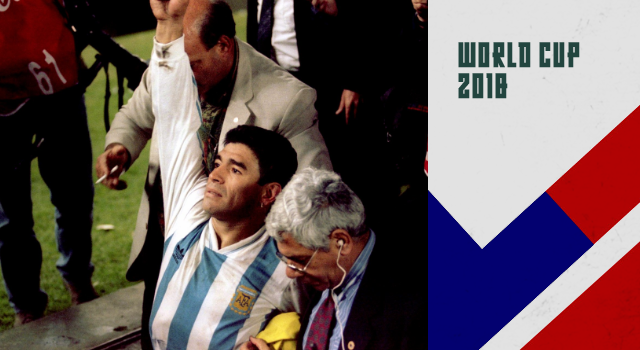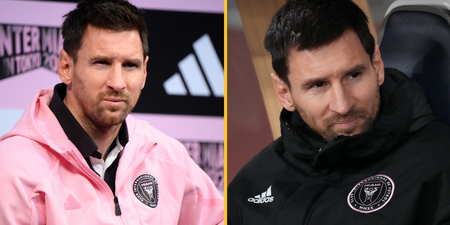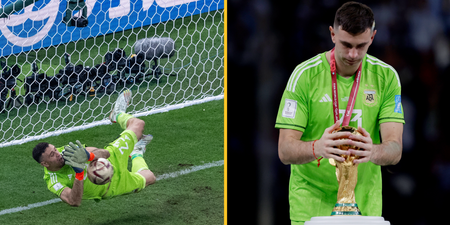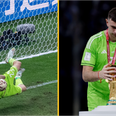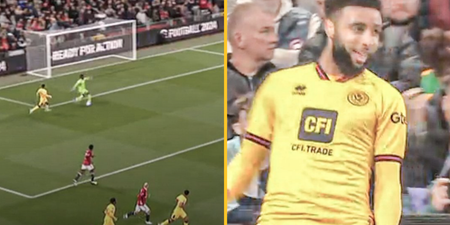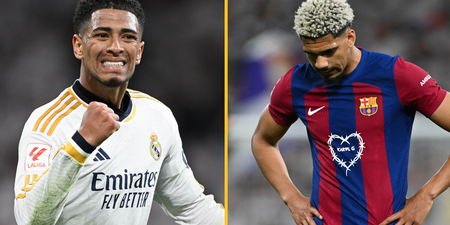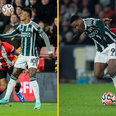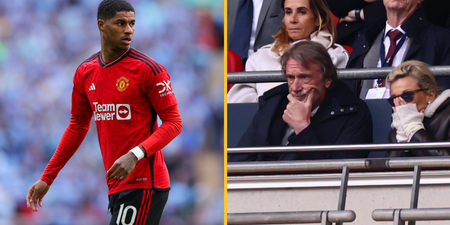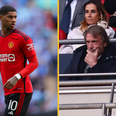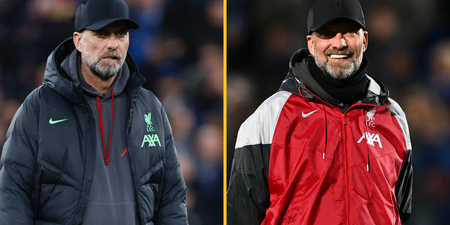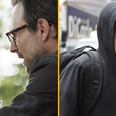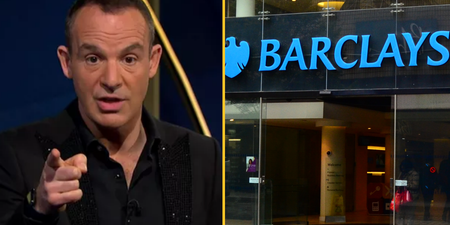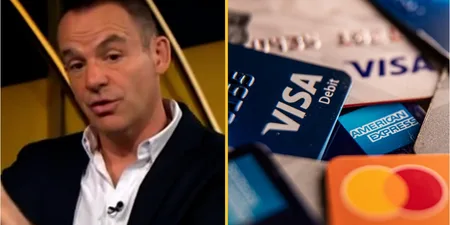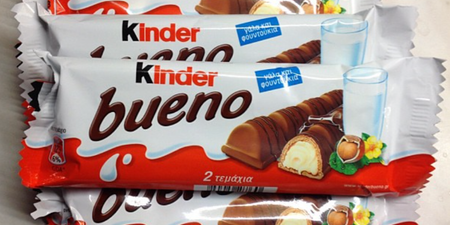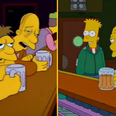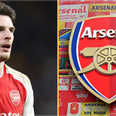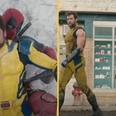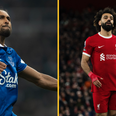Liam Gallagher tells a story about it
About a night in Buenos Aires after an Oasis concert that seems almost unbelievable. Until you realise that the story centres on one Diego Armando Maradona.
“We’re sat in a bar having a drink and about thirty people come leggin’ it in like the Ant Hill Mob,” he tells music journalist John Doran.
“And we’re like who the fuckin’ hell is that. Anyway, found out it was Maradona and he’d gone upstairs with a load of mad ‘eads and a load of women of the night. So, we were like ‘can we just go up and meet him?’ and his interpreter has gone ‘alright, let me go and square it with him’. Anyway, he comes down and says only the Gallaghers can go up. So, we steamed up there and there was loads of activity going on and there’s Maradona in the middle of the room doing football tricks with a bottle top. And his eyes were fucking like that,” says Gallagher as he holds his hands out until they’re about two feet apart. “And I was like, ‘it’s a bit moody in here, let’s just get a quick picture with him and we’ll fuck off’.
“Anyway,” he continues. “He’s sweating his bollocks off and then he says something and we’re like ‘what did he just say?’ and the (interpreter) says, ‘he’s told me to tell you that if you leave with any of his bitches, he’ll have you shot’.”
And I thought about finishing the piece right here. Because that story, in 214 words, sums up Maradona so perfectly that anything further is probably an injustice.

Yet here we are.
This World Cup, this wonderful, magical journey we’re on has thrown up so many stories already. And Maradona is just one fragment of what’s been joyous about it. In part because of what’s happening with Argentina as a footballing nation, in part because of Lionel Messi’s struggles to match El Pibe Del Oro’s accomplishments on the international stage and in part, frankly, because he’s alive to witness it at all.
Make no mistake, he can be a rambling, shambles of a human being. When ITV’s Jacqui Oatley spotted him pulling his eyes sideways at South Korean fans, it underlined the point implicitly. His casual racism is unacceptable and indefensible, and critics would argue that much of his career falls under those twin banners.
And yet oddly, there’s something rather beautiful about the man. He’s lived a life. And a remarkable one at that. One that almost all of us would probably only dream of living. Of fame, fortune, power, money, drugs. And genius. So much genius. He engenders revulsion and adulation in equal strokes. Loathing him is easy. But so is loving him.
His life story is such that it’s not always easy to remember the great times because they’re so mired by the betrayal of much that’s happened since his days at Los Cebollitas, the junior team of Argentinos Juniors where his remarkable talent was first spotted.
A generation of football fans born after Mexico ’86 have grown up seeing just the bloated, often drug addled shell of a man who stood in the stands in Saint Petersburg in the aftermath of Marcus Rojo’s winner that extended Argentina’s stay in Russia and stuck his fingers up at the world.

They weren’t around to bear witness to what came before. And they struggle to understand why we should care about him given his off-field reputation. Perhaps because of that it’s easy to overlook the fact that he was the greatest footballer of a generation, perhaps the greatest of all time. And despite the mess, that should never be forgotten. After all, we’ve seen things they’ll never see: notably that run from 1985 to 1990 where he simply took over world football.
Diego first, the rest nowhere.
His years at Napoli, where he led the Gli Azzurri to their only two Serie A titles, a Coppa Italia, a UEFA Cup and an Italian Supercup, scoring 115 goals in 248 games, were arguably the greatest period that any one player has had at a single club. Perhaps not in terms of trophies – despite the haul above – but by what an individual meant to a team, to a city, even to a region. His magic was hard to quantify.
What he still means to Naples is unquantifiable. Before Maradona joined in 1984, the only titles Napoli had ever won were the Coppa Italia in ’62 and ’76 and the wonderfully named Cup of the Alps the year England lifted the Jules Rimet Trophy. For a city passionately in love with football, it wasn’t good enough.
Much of Italian society believes there are two countries within one: the powerful north, home to the finest businesses and Giuseppe Conte’s political base; and the south – which missed out on the industrial revolution and now plays an unwinnable game of catch-up with its other half. If northern Italy is Prada, then the Mezzogiorno is rough and ready streetwear. Easy to see then why the son of a factory worker, this street urchin from a shanty town on the southern edge of Buenos Aires would feel so at home on the Mediterranean.
Fans clogged the autostrada when he first arrived, desperate for a glimpse of the man who’d fallen out of love with Barcelona and was now in Italy with a point to prove. It got so chaotic that a Maradona lookalike was hired to distract journalists, and 70,000 fans packed the San Pablo Stadium for his unveiling. Within two years he’d won a World Cup in Mexico and the Scudetto for the Partenopei, breaking the vicelike grip of the north: 11 of the 12 titles before the 86/87 season had been won by either Juventus, Inter, AC Milan, Roma and Torino.
And whilst he courted controversy, and his womanising, and his drug and alcohol abuse spiralled out of control, he could still mesmerise with the ball at his feet. Fans would arrive early for games just to see him warm up. Famously, one night in Munich ahead of the UEFA Cup semi-final second leg against Bayern in 1989, as his teammates sprinted around him, he performed a remarkable keepy-uppy session to the tune of Opus’s hit Live is Life.
With the laces of his SPA Kings trailing on the floor, he bounces the ball from his shoulders to his head, balancing it there before flicking it up and catching it again on his laces. His body moves along with the beat, the ooh’s and aah’s ringing out even above the PA system, as Maradona plays to the crowd, whilst seasoned internationals like Careca, Ciro Ferrara and Fernando Di Napoli stretch and run sprints.
Then in 1990, he carried an ageing Argentina side to its second straight World Cup Final, turning on the magic in the round of 16 against Brazil, picking up the ball and holding off four challenges before sliding in Claudio Caniggia to score the winner. Reminders yet again of his greatness.
Although his career would end in ignominy after failing a drugs test at USA ’94, Maradona remains an icon, in part for everything that he did right on the pitch and in part because of everything he did wrong off it. As former players and pundits sought to criticise him after his aforementioned celebration after Argentina beat Nigeria, their words felt a little empty, as if trying to save him now, at this stage, was ever going to work.
When news filtered out – incorrectly – that he’d been taken to hospital, there was a collective gasp from those who’d seen him in his pomp. But if he’d slipped away from this mortal coil like a little eel, no-one would have been surprised. And no-one could deny that he’d lived life his way, the Maradona way.
The only way.
There’s a grainy video on YouTube of an exhibition match between America and the Rest of the World. In it, El Diego scores the winning penalty and is mobbed by his teammates. In the middle of the celebration comes a ‘friend’ in a blue shirt and white trousers holding a see-through bag full of white powder. He pushes to the front and proceeds to hold it out so that Maradona can have a sniff. Much like the Liam Gallagher story, it would be unbelievable until you discovered who the player was.
Was only told about this gem today. Maradona scoring a goal in all star game and his mate running on the pitch with a bag of marching powder to give him a celebratory sniff. Amazing… pic.twitter.com/zJu07lzAYM
— Jay Motty (@JayMotty) June 27, 2018
Legend has it that when he inspired Napoli to that first Scudetto in 1987, someone scrawled graffiti on a cemetery wall in the local dialect: ‘Guaglio, che ve site persi’! they wrote. Or ‘Kid, what have you missed!’
Somehow now, to the fans who don’t know what all the fuss is about, that seems apposite.
